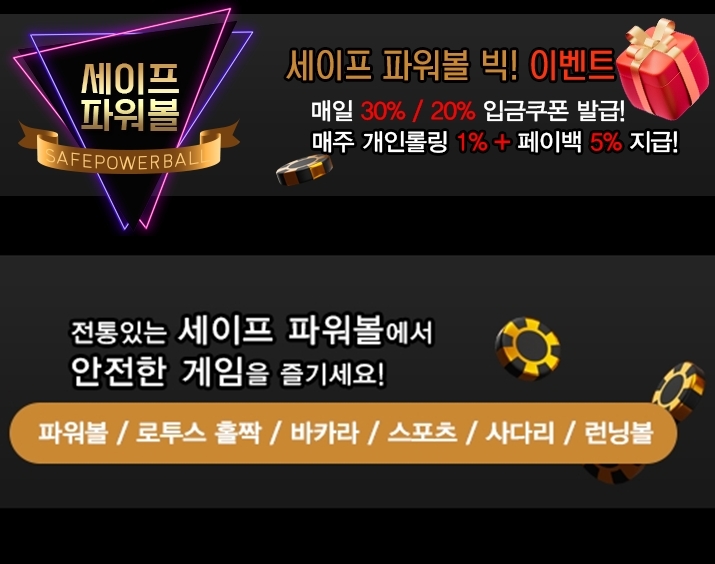Betonred: A Comprehensive Look at a Promising Anticancer Agent
페이지 정보

본문
Higher pigment concentrations result in a deeper, richer red, while lower concentrations produce a lighter, more muted shade. It's crucial to use high-quality pigments from reputable suppliers to guarantee consistent color and durability. The production process is largely similar to that of regular concrete. Poor quality pigments can fade, streak, or even react negatively with the concrete mix, compromising its structural integrity. The quantity of pigment used directly affects the intensity of the red color. The cement, aggregates, water, and pigments are mixed thoroughly to achieve a homogeneous blend.
 Application Techniques: Following the manufacturer's instructions carefully is crucial for achieving the desired color, finish, and performance. Proper application techniques, such as even spreading and controlled drying times, are essential.
Application Techniques: Following the manufacturer's instructions carefully is crucial for achieving the desired color, finish, and performance. Proper application techniques, such as even spreading and controlled drying times, are essential.
 They also enhance fire resistance by melting and creating channels for pressure relief.
They also enhance fire resistance by melting and creating channels for pressure relief.
Synthetic Fibers (e.g., Nylon, Acrylic): Offer a balance of strength, durability, and cost-effectiveness.
Carbon Fibers: Provide exceptional strength and stiffness but are generally more expensive. Steel Fibers: Provide high tensile strength and ductility, enhancing the concrete's ability to withstand cracking and deformation. They are used in specialized applications requiring high performance. They are commonly used in pavements, bridge decks, and shotcrete applications.
Polypropylene Fibers: Improve resistance to plastic shrinkage cracking during the early stages of curing.
Variations in pigment concentration, mixing time, and curing conditions can lead to noticeable color differences. Color Consistency: Achieving consistent color throughout a large project can be challenging.
Tunnels and Underground Structures: High strength and durability are essential for withstanding soil pressure and preventing water ingress. Shotcrete, a type of concrete sprayed onto surfaces, often incorporates fibers for increased stability and crack resistance in tunnel linings.
While the specific formulation and branding may vary, the underlying principles of enhancing concrete performance through strategic modifications remain the same, driving innovation and shaping the future of construction. Betonred-type concretes represent a significant advancement in construction materials technology. By carefully selecting and combining high-quality ingredients, including specialized cements, optimized aggregates, chemical admixtures, and fiber reinforcement, engineers can tailor concrete properties to meet the specific requirements of a wide range of applications. The benefits of increased strength, durability, crack resistance, and sustainability make betonred (campusscholar.net) a valuable tool for building more resilient and efficient infrastructure.
Increased durability also contributes to sustainability by extending the lifespan of structures and reducing the need for frequent repairs or replacements. Sustainability: The use of SCMs can reduce the carbon footprint of concrete production by partially replacing cement, a significant contributor to greenhouse gas emissions.
However, the aesthetic benefits and potential long-term value often outweigh the higher initial cost. Cost: Betonred is typically more expensive than traditional grey concrete due to the added cost of the pigments.
Understanding and overcoming these resistance mechanisms is essential for long-term success. Resistance Mechanisms: There is a possibility that cancer cells could develop resistance to Betonred over time.
It can be combined with other materials, such as glass, steel, and wood, to create unique architectural features. Design Flexibility: Betonred can be molded into various shapes and forms, allowing for creative design possibilities.
While still in pre-clinical and early clinical development, its unique mechanism of action and promising in vitro and in vivo results have positioned it as a potential game-changer in cancer therapy. This article provides a comprehensive overview of Betonred, covering its chemical structure, mechanism of action, pre-clinical and clinical studies, potential applications, and current challenges. Betonred is an emerging anticancer compound drawing significant attention in the scientific community.
Water-reducing admixtures (WRAs), including superplasticizers (high-range WRAs), significantly reduce the water-cement ratio without sacrificing workability. Air-entraining agents create microscopic air bubbles that improve freeze-thaw resistance. This results in higher strength and reduced permeability. Other admixtures, such as corrosion inhibitors, retarders, and accelerators, can be used to address specific project requirements. Chemical Admixtures: Admixtures are essential for tailoring concrete properties.
 Limited Clinical Data: More extensive clinical trials are needed to definitively demonstrate its efficacy and safety.
Limited Clinical Data: More extensive clinical trials are needed to definitively demonstrate its efficacy and safety.
Mechanism of Action: A more complete understanding of the precise mechanisms of action is needed to optimize its use in different cancer types.
Drug Delivery: Developing effective drug delivery strategies is crucial for ensuring that Betonred reaches the tumor in sufficient concentrations.
Potential Side Effects: While early data suggests that Betonred is generally well-tolerated, longer-term studies are needed to identify and manage any potential side effects.
 Application Techniques: Following the manufacturer's instructions carefully is crucial for achieving the desired color, finish, and performance. Proper application techniques, such as even spreading and controlled drying times, are essential.
Application Techniques: Following the manufacturer's instructions carefully is crucial for achieving the desired color, finish, and performance. Proper application techniques, such as even spreading and controlled drying times, are essential. They also enhance fire resistance by melting and creating channels for pressure relief.
They also enhance fire resistance by melting and creating channels for pressure relief.Synthetic Fibers (e.g., Nylon, Acrylic): Offer a balance of strength, durability, and cost-effectiveness.
Carbon Fibers: Provide exceptional strength and stiffness but are generally more expensive. Steel Fibers: Provide high tensile strength and ductility, enhancing the concrete's ability to withstand cracking and deformation. They are used in specialized applications requiring high performance. They are commonly used in pavements, bridge decks, and shotcrete applications.
Polypropylene Fibers: Improve resistance to plastic shrinkage cracking during the early stages of curing.
Variations in pigment concentration, mixing time, and curing conditions can lead to noticeable color differences. Color Consistency: Achieving consistent color throughout a large project can be challenging.
Tunnels and Underground Structures: High strength and durability are essential for withstanding soil pressure and preventing water ingress. Shotcrete, a type of concrete sprayed onto surfaces, often incorporates fibers for increased stability and crack resistance in tunnel linings.
While the specific formulation and branding may vary, the underlying principles of enhancing concrete performance through strategic modifications remain the same, driving innovation and shaping the future of construction. Betonred-type concretes represent a significant advancement in construction materials technology. By carefully selecting and combining high-quality ingredients, including specialized cements, optimized aggregates, chemical admixtures, and fiber reinforcement, engineers can tailor concrete properties to meet the specific requirements of a wide range of applications. The benefits of increased strength, durability, crack resistance, and sustainability make betonred (campusscholar.net) a valuable tool for building more resilient and efficient infrastructure.
Increased durability also contributes to sustainability by extending the lifespan of structures and reducing the need for frequent repairs or replacements. Sustainability: The use of SCMs can reduce the carbon footprint of concrete production by partially replacing cement, a significant contributor to greenhouse gas emissions.
However, the aesthetic benefits and potential long-term value often outweigh the higher initial cost. Cost: Betonred is typically more expensive than traditional grey concrete due to the added cost of the pigments.
Understanding and overcoming these resistance mechanisms is essential for long-term success. Resistance Mechanisms: There is a possibility that cancer cells could develop resistance to Betonred over time.
It can be combined with other materials, such as glass, steel, and wood, to create unique architectural features. Design Flexibility: Betonred can be molded into various shapes and forms, allowing for creative design possibilities.
While still in pre-clinical and early clinical development, its unique mechanism of action and promising in vitro and in vivo results have positioned it as a potential game-changer in cancer therapy. This article provides a comprehensive overview of Betonred, covering its chemical structure, mechanism of action, pre-clinical and clinical studies, potential applications, and current challenges. Betonred is an emerging anticancer compound drawing significant attention in the scientific community.
Water-reducing admixtures (WRAs), including superplasticizers (high-range WRAs), significantly reduce the water-cement ratio without sacrificing workability. Air-entraining agents create microscopic air bubbles that improve freeze-thaw resistance. This results in higher strength and reduced permeability. Other admixtures, such as corrosion inhibitors, retarders, and accelerators, can be used to address specific project requirements. Chemical Admixtures: Admixtures are essential for tailoring concrete properties.
 Limited Clinical Data: More extensive clinical trials are needed to definitively demonstrate its efficacy and safety.
Limited Clinical Data: More extensive clinical trials are needed to definitively demonstrate its efficacy and safety.Mechanism of Action: A more complete understanding of the precise mechanisms of action is needed to optimize its use in different cancer types.
Drug Delivery: Developing effective drug delivery strategies is crucial for ensuring that Betonred reaches the tumor in sufficient concentrations.
Potential Side Effects: While early data suggests that Betonred is generally well-tolerated, longer-term studies are needed to identify and manage any potential side effects.
- 이전글The Damage A Leaking Roof Are Capable Of 25.06.06
- 다음글Ostéopathe à Montréal : Conseils pour choisir le bon compétent pour votre bien-être 25.06.06
댓글목록
등록된 댓글이 없습니다.



